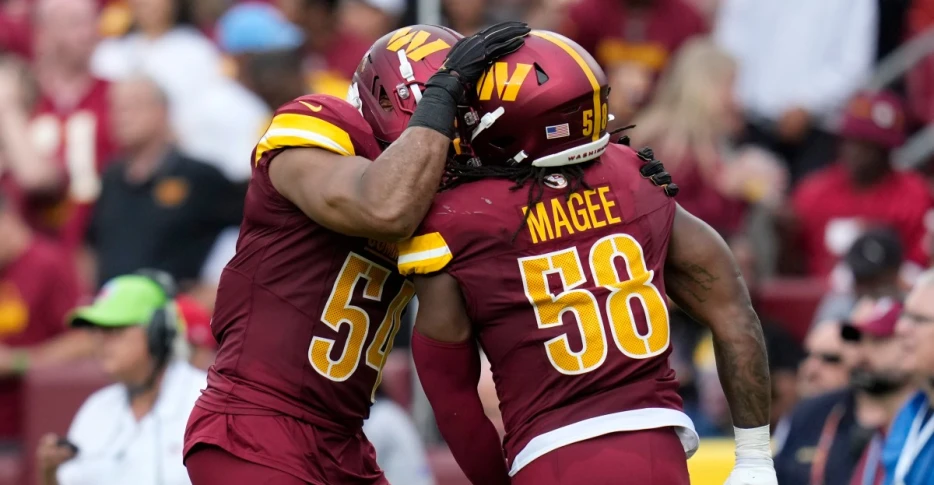
 Hogs Haven
Hogs Haven
The scoreboard at Arrowhead told an unforgiving story — 28–7, another primetime loss for the burgundy and gold, who now sit at 3–5.
But behind the result, within the defensive substitutions and personnel packages of Week 8, there were the first visible signs of change. Led by Dan Quinn and defensive coordinator Joe Whitt Jr., the tandem began adjusting, even just slightly, the structure of a defense that had grown old, slow, and reactive — one that simply fails to match the tempo of the modern NFL.
For the first time in 2025, speed and youth took precedence over experience. It came not in grand announcements or schematic overhauls, but through the quiet introduction of players like Jordan Magee and Tyler Owens — each embodying a specific need that has been lacking in Washington’s defense: range, adaptability, and pursuit.
The result in Kansas City was ugly, but the intention behind the lineup was clear. Washington, after weeks of masking inefficiencies with veteran steadiness, finally chose to lean into athleticism.
It may have come too late to rescue the early part of the season, but it offers a necessary blueprint for what the defense must become.
When Quinn and Whitt arrived, the expectation was that Washington’s defense would mirror the aggressive, fast-flowing identity Quinn once built in Seattle and Dallas — defenses that chased, closed, and punished offenses for stretching the field. But through the first half of 2025, the Commanders looked more static. There were flashes at times, sure, but far too often they looked a step, or two, or three, slow.
Much of that lag existed in the middle of the field. Bobby Wagner’s presence provides leadership and structure, but at 35, his coverage range is no longer what it was. Tight ends have found soft spots all around him, and backs have turned short check-downs into chunk plays with consistency. When speed becomes a liability, even perfect positioning can’t always compensate.
The front seven, once considered the team’s backbone, had its own set of injuries and inconsistencies. With Dorance Armstrong, Deatrich Wise Jr, and Javontae Jean-Baptiste each on the shelf for the long haul, the room lost its bite. Corners were forced into coverage longer, exposing spacing issues and communication breakdowns that no amount of veteran savvy could fix.
Against Patrick Mahomes, those problems were magnified. Kansas City stretched the defense horizontally, used motion to manipulate linebackers, and found advantageous matchups specifically in the second half. It wasn’t simply a talent gap even though that remains an issue — it was a speed gap. My guy is quicker than your guy.
The Commanders were reacting to plays rather than dictating them, a common theme through eight weeks.
That reality has forced Quinn and Whitt to reassess how the unit was built.
Today’s NFL offenses aren’t just faster — they’re layered, forcing defenders to cover space in ways the old positional archetypes no longer allow. And so, Week 8 became an inflection point.